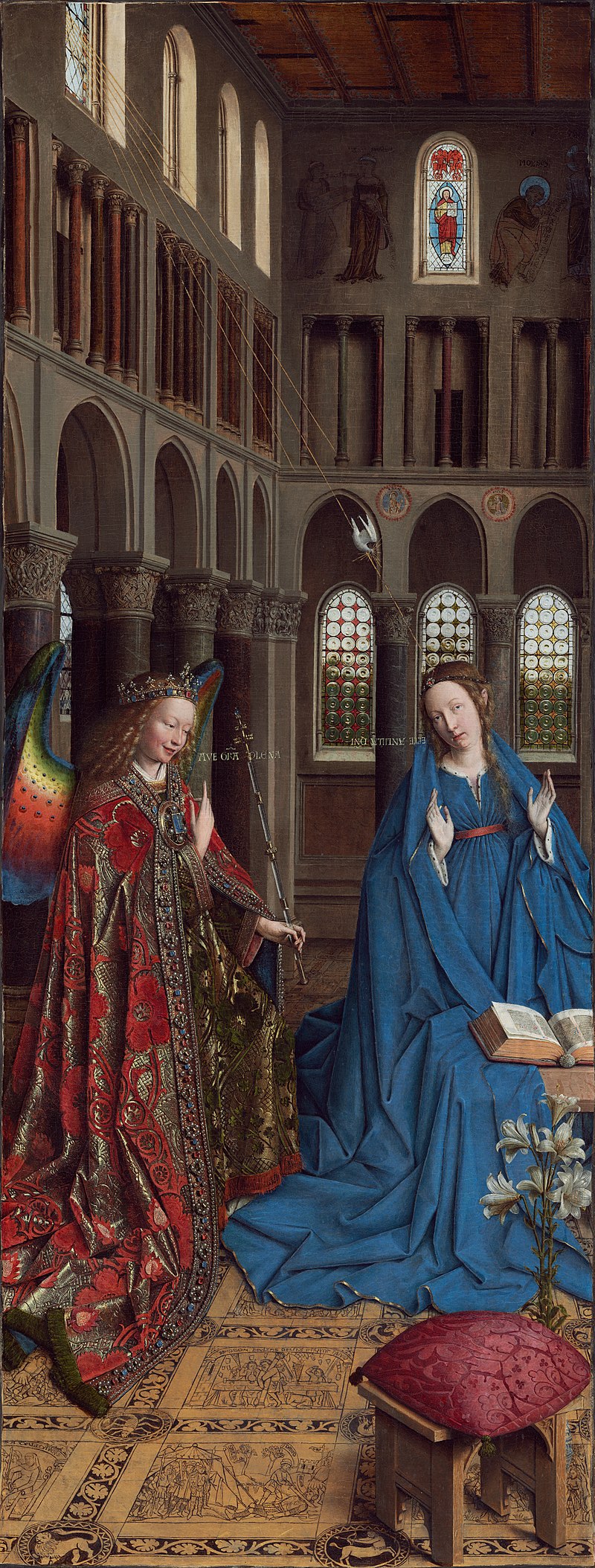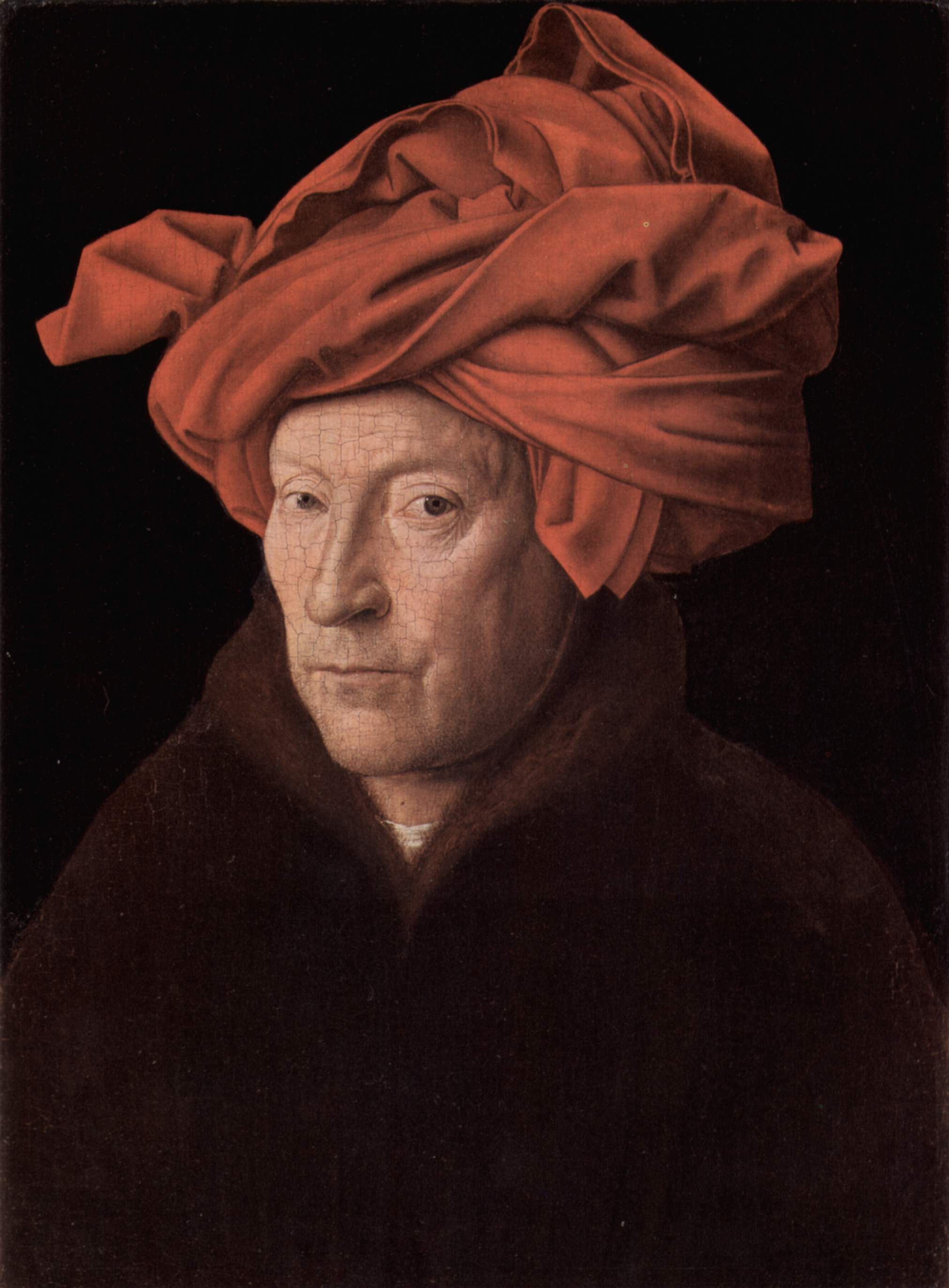The Annunciation by Jan van Eyck (don't confuse him with Anton van Dyck!) is thought to be the left (inner) wing of a triptych; there has been no sighting of the other wings since 1817. The Annunciation is a highly complex work, whose iconography is still debated by art historians.
The picture depicts the Annunciation by the Archangel Gabriel to the Virgin Mary that she will bear the son of God (Luke 1:26-38). The inscription shows his words: AVE GRÃ. PLENA (Hail, full of grace). She modestly draws back and responds, ECCE ANCILLA DÑI (Behold the handmaiden of the Lord). The words appear upside down because they are directed to God and are therefore inscribed with a God's-eye view. The Seven gifts of the Holy Spirit descend to her on seven rays of light from the upper window to the left, with the dove symbolizing the Holy Spirit following the same path. This is the moment God's plan for salvation is set in motion. Through Christ's human incarnation the old era of the Law is transformed into a new era of Grace.
It has been suggested that Mary has been given the features of Isabella of Portugal, wife of Philip the Good, Duke of Burgundy, who may well have commissioned the painting from van Eyck, his (part-time) court painter. Mary wears a robe in her usual blue, which is trimmed in ermine, reserved for royalty, which would suit this theory, although the Middle Ages placed great emphasis on Mary's royal descent in any case. As is usual, especially in the North, Mary's features are less attractive than those of Gabriel; being a sexless angel there was considered to be no possibility of his beauty causing inappropriate thoughts in the onlooker. Neither figure has a halo; these were being dispensed with in Early Netherlandish art in the interests of realism—eventually the Italians would follow. Mary's posture is ambiguous; it is not clear if she is standing, kneeling, or sitting.
P.S. Until 30 April 2020 at the MSK Ghent you can visit one of the must-see exhibitions of the year: Van Eyck An Optical Revolution. If you can't go there, though, don't worry! We will be there and will give you some insights on our DailyArt Magazine. : ) In the meantime, you can read 10 things you need to know about Jan Van Eyck!


 Jan van Eyck
Jan van Eyck